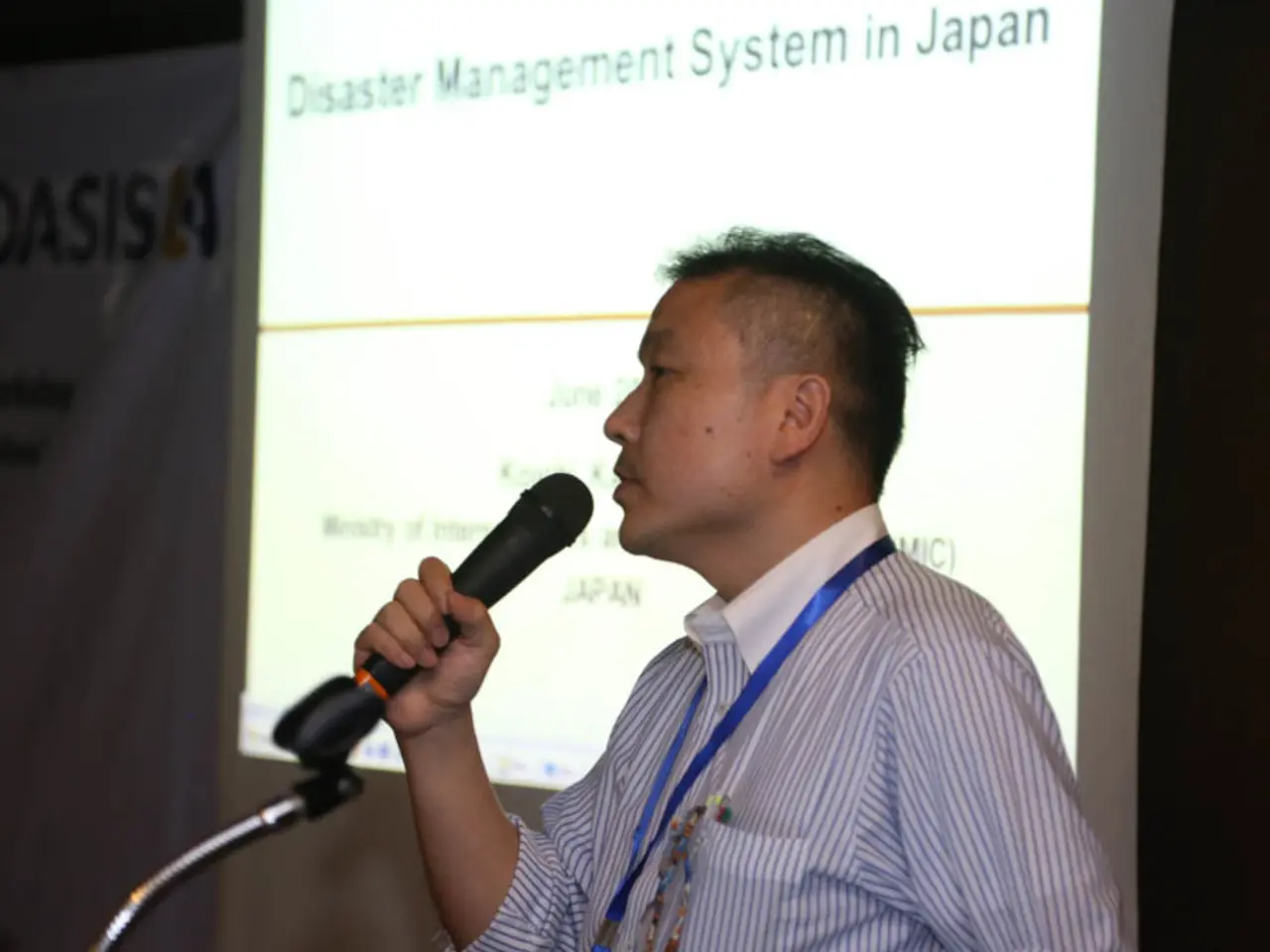Torrential Rain Disaster in South Korea: 19 Fatalities from Flash Floods, as Devastation Lingers
South Korea is currently in the recovery phase after experiencing one of its worst monsoon flooding events in recent memory. The disaster, which occurred between July 16 and 21, 2025, resulted in at least 19 deaths and 9 people missing, primarily in the southern regions.
The floods and landslides caused significant damage, with over 6,700 buildings being damaged, roads and vehicles destroyed, and farmland ruined. Approximately 14,575 people were displaced across 15 provinces, with about 2,549 individuals still residing in temporary shelters as of July 25.
The meteorological cause of the flooding was the stagnation of a mesoscale low-pressure system where warm, humid southern air met cold, dry northern air, causing prolonged heavy rainfall. Climate change factors, such as warmer sea surface temperatures and increasing water vapor from the South China Sea and Western Pacific, are believed to contribute to the intensity and frequency of such extreme precipitation events in South Korea.
Recovery efforts involve government rescue and relief operations, including evacuations and shelters for displaced persons. Infrastructure repair for roads, buildings, and utilities is underway. Ongoing search and rescue missions, especially in the worst-hit southwestern areas, are a priority. Weather agencies report drying conditions expected over the next 48 hours, which will aid recovery work.
Special disaster zones have been declared to streamline the response process, and thousands of relief supplies, including basic emergency kits, blankets, and hygiene supplies, have been issued. Over 14,000 residents have been displaced due to the floods, and psychological support services have assisted hundreds of people.
President Lee has organized emergency operational sites to coordinate military troops and emergency agencies for search and rescue, recovery, and delivery of relief supplies. Sancheong and Gapyeong were the areas hit hardest by the floods, reporting the highest numbers of deaths and damage.
For news updates, follow @YonhapNews, @TheKoreaHerald, and @Reuters on Twitter. The National Disaster and Safety Portal provides real-time updates on the flood situation. In addition, Give2Asia and The Hope Bridge Korea Disaster Relief Association are providing international support and accepting donations for the flood relief efforts.
Those in need of emergency services can call 119 for fire/ambulance and 112 for police assistance. Some areas still have warnings in effect, so it is essential to check with the Korea Meteorological Administration for updates. Thousands of people remain without homes due to the flood damage.
Sarah Tancredi, an experienced journalist and news reporter specializing in environmental and climate crisis issues, is covering the South Korea flood response. For more information, follow Sarah Tancredi on Twitter.
- Sarah Tancredi, an expert in environmental and climate crisis issues, is providing updates on the South Korea flood response through her Twitter account.
- The disaster, caused by prolonged heavy rainfall attributed to a stagnant mesoscale low-pressure system and climate change factors, resulted in at least 19 deaths, 9 missing persons, and the displacement of over 14,000 people in 15 provinces.
- To aid in recovery, courses on environmental and climate crisis mitigation and green building practices could be important in preventing similar events in the future.
- ESG reporting should be utilized by companies to ensure they are taking appropriate measures to address environmental concerns and contribute to the recovery of affected areas.








